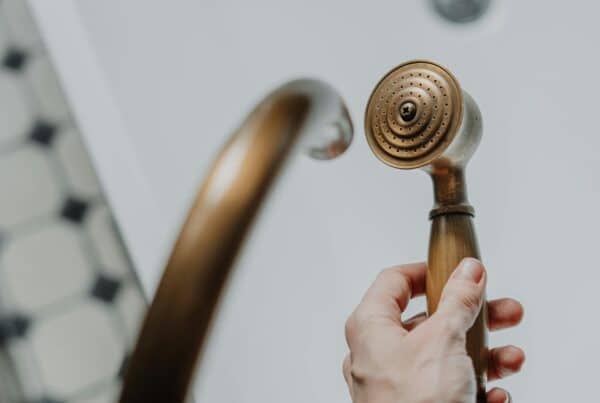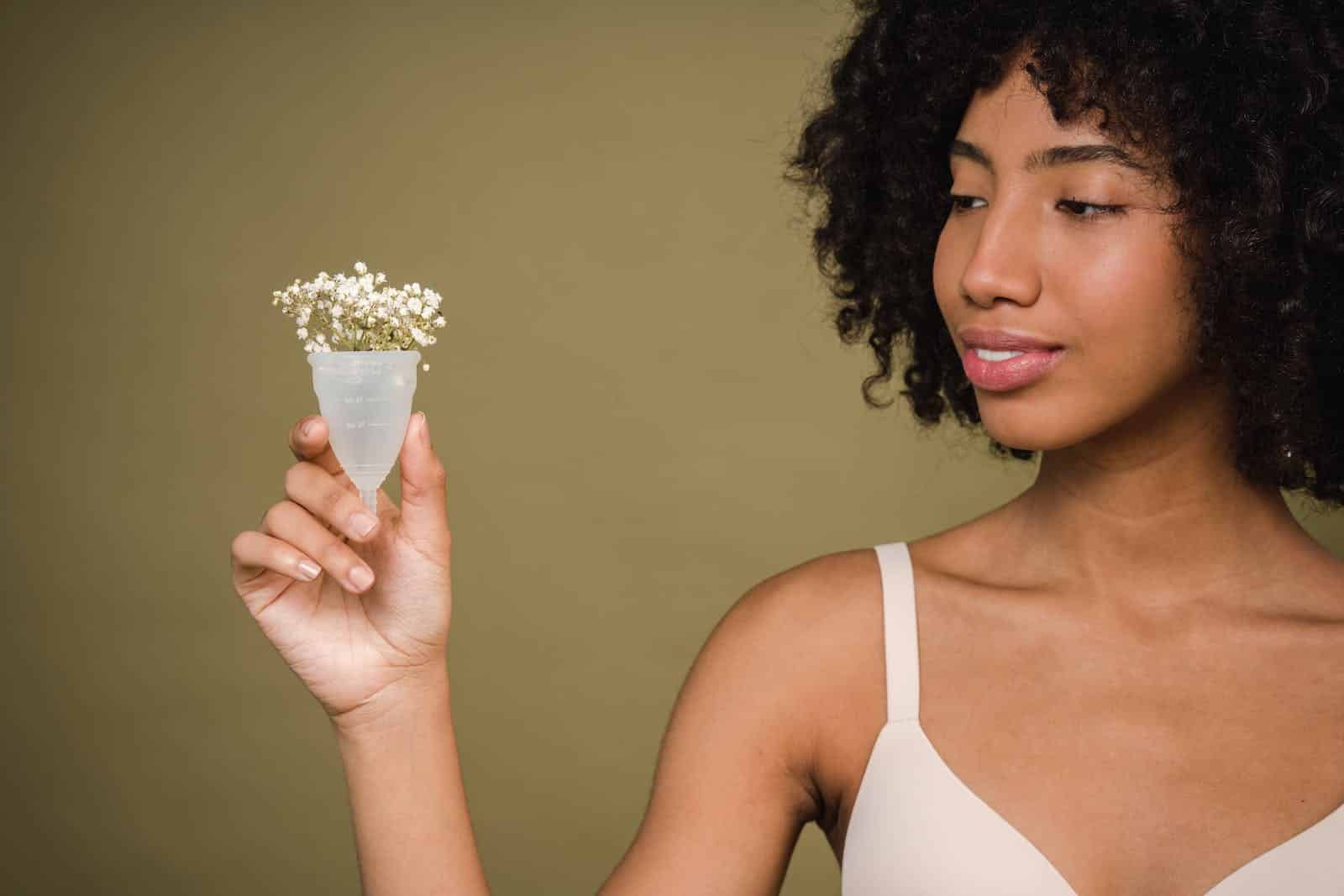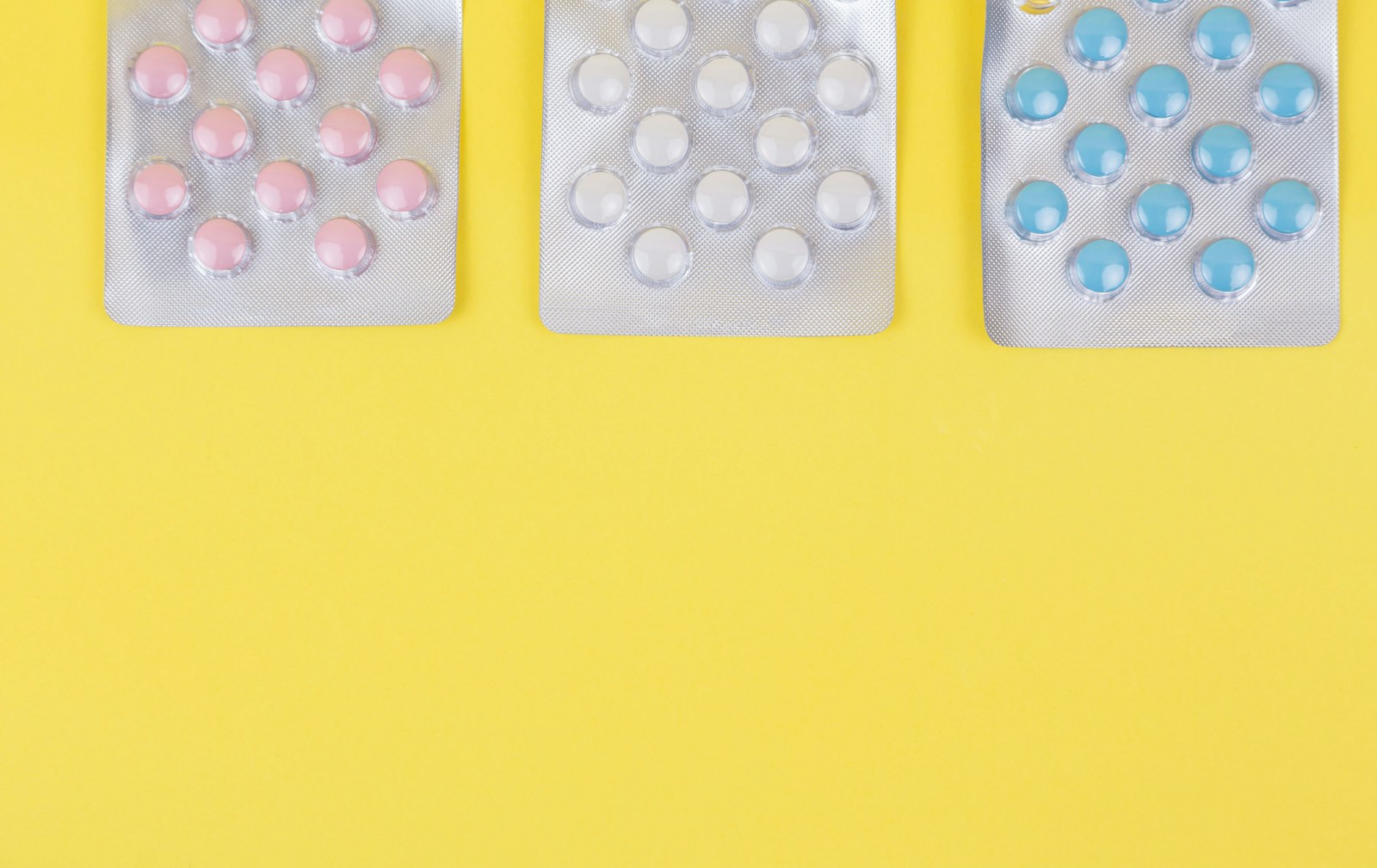We’re Setting the Record Straight
The feminine hygiene aisle at your local big-box retailer contains an array of scented shower gels, deodorants, creams, and cleansing wipes all claiming to balance your vaginal pH and keep you smelling like daisies down there. However, using these products could actually be leaving our vaginas all the worse for wear.
Our vaginal ecosystem is complex, and changes to our intimate environment (which can be triggered by harsh vaginal hygiene products) can increase our chances of contracting infections or other health complications. This is why it’s so important to know how our daily routines and the products we use affect our vaginas and something called the vaginal microbiome.
Unsure of what a vaginal microbiome actually is? You’re definitely not alone there. Keep scrolling and we‘ll set the record straight on how changes in your vagina can affect you, and why you should pass on certain vaginal hygiene products.
Does the vaginal microbiome exist, and what do you need to know?
We’ve all heard of the gut microbiome and the importance of taking care of our gut health, but what about the vaginal microbiome? And what is a microbiome, for that matter?
There are TRILLIONS of microscopic organisms that live in and on our bodies (mind blowing, right?). The collection of bacteria, fungi, and other organisms (collectively, we call them microbes) that live both inside and on us are called our microbiome. This gigantic microbiome can be further categorized into smaller ecosystems, such as the vaginal microbiome– which consists of the microbes that live inside our vaginas. Turns out it’s not as complicated as we thought!
The organisms living in our microbiomes tend to have a bad rap. Afterall, we’re familiar with the bacteria and fungi that we wash our hands and use sanitizing gels to ward off. However, many of the microbes in our vaginas actually protect us from illness too.
Take lactobacilli for example. Making up the majority of microbes in our vaginal microbiome, these bacteria help us to maintain a healthy pH and trigger our immune systems to jump into action in the presence of unwelcome germs.
Changes in our vaginal microbiome can occur throughout our menstrual cycles, pregnancy and menopause, and if we’re unwell. While our vaginal microbiomes are generally pretty resistant to change, oftentimes restoring their own balance after something has disrupted them, on occasion a loss of balance can snowball into something that requires support from a medical professional.
Unbalanced Microbiome
When microbes other than lactobacilli become more dominant in our vaginal microbiomes, or when foreign microbes find their way into our vaginas, this is when we can develop infections and begin to notice odors, pain, or itchiness downstairs.
Balance in your vaginal microbiome can be disturbed by many factors, but these are some of the most common:
Foreign Bodies
Anything that comes near or penetrates your vagina can introduce new microbes to your vaginal microbiome. This includes a sexual partner’s body parts (especially during unprotected sex, and sex with new partners), bodily fluids such as semen, sweat and saliva, toys, and lubricants.
Menstruation
Aside from the different types of bacteria menstruation can introduce to our vaginas, period blood can also alter our vaginal pH and create an environment that’s more hospitable to certain germs (such as those that cause yeast infections).
Hormone Levels
Hormones including estrogen, progesterone, and testosterone can affect our vaginal microbiomes. This means that our microbiomes can change throughout our menstrual cycles, or if we have conditions that affect our hormone levels. Equally, the makeup of our microbiomes will change in response to contraceptive medications and medications we may take during perimenopause and menopause, or as part of our gender-affirming care.
Antibiotic Medications
Antibiotics kill bacteria to prevent infections from spreading. Unfortunately, these medications can’t differentiate harmful bacteria from the bacteria that keep us healthy. This means that taking these medications can impact the balance of our vaginal microbiomes and make us more vulnerable to new infections.
Tight Pants or Leggings
Wearing pants that limit circulation can create a very warm and sweaty environment around your vulva and vagina that’s ideal for the types of bacteria that cause yeast infections to develop.
Remember; these factors don’t cause infections, but they can create an environment that promotes the development of certain conditions.
Feminine Products can be Problematic
The problem with many feminine hygiene products is that they’re too harsh for your vulva and vagina! If you’ve read Hormonally’s resource on what’s up down below, you’ll know that our vaginas are self-cleaning, and can manage their pH levels quite well on their own. In fact, you should only be using water and mild soaps when washing your downstairs area.
Many feminine hygiene products claim to effectively kill the “bad” bacteria. And while they do get rid of the microbes in our vaginas that can lead to infections, they also reduce our lactobacilli levels. Equally, some of these products also have a pH altering effect on our vaginas. Either way, these changes in our vaginal microbiomes impair our vaginal defenses and make it easier for unwanted germs to enter our vaginas, grow, and thrive.
So, while you understandably will want to take any measure to ensure things don’t go downhill downstairs, you should pass on the numerous hygiene products that you can get over-the-counter.

.
Coping with Conditions
When lactobacilli becomes less dominant in our vaginal microbiomes, or when the pH in our vaginas change- for instance, as a result of feminine hygiene product use- this creates an ideal environment for the germs that cause infections to develop.
Depending on which germ or germs have infected your vaginal microbiome, you may develop a number of conditions.
These are some of the common conditions that can result when our vaginal microbiomes get thrown out of whack.
Urinary Tract Infections (UTIs)
UTIs are infections in your urinary tract. UTIs can result when microbes from your vagina make their way into the parts of your urinary tract.
Some things to know about UTI’s:
- Discharge: UTI’s do not usually cause discharge.
- Pain: If you have a UTI, you may feel a burning sensation when you pee, as well as abdominal or pelvic pain.
- Itching: Itchiness downstairs is not usually a symptom of UTIs.
- Smell: You may notice that your pee will start to have a different smell.
- Additional Symptoms: UTIs can make you need to pee often, and you may also notice that your pee starts to look cloudy or that there is blood in it
Vaginal Yeast Infections
Yeast infection occur when there is an overgrowth of a fungus called candida in your vagina
Some things to know about yeast infections:
- Discharge: Yeast infections can cause your discharge to look thick and clumpy or watery.
- Pain: Vaginal yeast infections can lead to burning sensations while you pee or have sex. Infections can also cause soreness around the vulva and vagina.
- Itching: If you have a yeast infection, you’ll likely feel very itchy in and around your vagina.
- Smell: Having a yeast infection can cause your discharge to have a different smell.
- Additional Symptoms: Look out for redness and swelling, and rashes on your vulva and vagina.
Bacterial Vaginosis (BV)
The overgrowth of several types of bacteria in your vaginal microbiome can lead to BV.
Some things to know about BV:
- Discharge: If you have BV, your discharge will be watery and may look grey or white.
- Pain: BV can cause pain in your vagina, especially during sex, and it may also burn when you pee.
- Itching: BV doesn’t usually cause itchiness, but it can in some women.
- Smell: If you have BV, you might notice that your discharge has a distinct odour.
Sexually transmitted Infections (STIs)
Many STIs are caused when bacteria, viruses, and parasites that aren’t normally found in your vagina are introduced to your vaginal microbiome through sexual or close physical contact
Some things to know about STI’s:
- Discharge: STIs can cause changes in the color, texture, and smell of your discharge. Pink, yellow or green tinged discharge can be a sign of an STI.
- Pain: STIs such as gonorrhea, chlamydia, and herpes can cause you to feel pain when you pee or have sex.
- Itching: Many STIs, such as herpes, genital warts, and gonorrhea can make you feel itchy.
- Smell: Some STIs can cause your vagina and/or your discharge to have a different smell.
- Additional Symptoms: Other STI symptoms include growths, abnormal uterine bleeding (AUB), fevers, and tiredness.
If you’re wondering what you can do to keep your vaginal microbiome in tip top shape, especially when most hygiene products are off the table, we’ve got you covered! Luckily, there are plenty of microbiome-friendly habits that we can incorporate into our lives to prevent infections on Hormonally’s resources on staying healthy down below!If you experience any of the symptoms above, or feel discomfort in or around your vagina, you should see your doctor.
You shouldn’t have to deal with discomfort downstairs, and a doctor can help you get to the bottom of your problem so you can find relief!

Top Takeaways
Conversations about our vaginal microbiome can become confusing, but caring for your vulva and vagina is actually pretty straightforward. If you‘re feeling discombobulated by conflicting care advice remind yourself of the following:
- There are many microbes that are naturally present in your vagina. It’s the changes in the relative quantities of these living things that can lead you to develop infections.
- The dynamics in your vaginal microbiome can change in response to many factors – some of which you have control over, but many of which you don’t. For the factors you can control, try out our tips and talk to your doctor about changes you can take to keep your vaginal microbiome in tip top shape. For the factors that are out of your control, knowing when you might be more vulnerable to downstairs disturbances can be helpful for staying on top of your symptoms and preventing infections from spreading.
- Skip the scented sprays, wipes, and washes. Or at least get an expert’s opinion, as many over-the-counter feminine hygiene products could leave your vaginal microbiome more vulnerable to infections. Your doctor can separate the facts from fiction, and they might even point you towards a more helpful alternative.
At Hormonally, we want you to be able to put your best foof forward, so keep these details in mind and take care of the diversity downstairs!
References
Ahrens P, Andersen LO, Lilje B, et al. Changes in the vaginal microbiota following antibiotic treatment for Mycoplasma genitalium, Chlamydia trachomatis and bacterial vaginosis. PLoS One. 2020;15(7):e0236036. Published 2020 Jul 28. doi:10.1371/journal.pone.0236036
Chen Y, Bruning E, Rubino J, Eder SE. Role of female intimate hygiene in vulvovaginal health: Global hygiene practices and product usage. Womens Health (Lond). 2017;13(3):58-67. doi:10.1177/1745505717731011
Chen X, Lu Y, Chen T, Li R. The Female Vaginal Microbiome in Health and Bacterial Vaginosis. Front Cell Infect Microbiol. 2021;11:631972. Published 2021 Apr 7. doi:10.3389/fcimb.2021.631972
Fashemi B, Delaney ML, Onderdonk AB, Fichorova RN. Effects of feminine hygiene products on the vaginal mucosal biome. Microb Ecol Health Dis. 2013;24:10.3402/mehd.v24i0.19703. Published 2013 Feb 25. doi:10.3402/mehd.v24i0.19703
France M, Alizadeh M, Brown S, Ma B, Ravel J. Towards a deeper understanding of the vaginal microbiota. Nat Microbiol. 2022;7(3):367-378. doi:10.1038/s41564-022-01083-2
Lewis FMT, Bernstein KT, Aral SO. Vaginal Microbiome and Its Relationship to Behavior, Sexual Health, and Sexually Transmitted Diseases. Obstet Gynecol. 2017;129(4):643-654. doi:10.1097/AOG.0000000000001932
Ma ZS. Microbiome Transmission During Sexual Intercourse Appears Stochastic and Supports the Red Queen Hypothesis. Front Microbiol. 2022;12:789983. Published 2022 Mar 8. doi:10.3389/fmicb.2021.789983
Noormohammadi M, Eslamian G, Kazemi SN, Rashidkhani B. Association between dietary patterns and bacterial vaginosis: a case-control study. Sci Rep. 2022;12(1):12199. Published 2022 Jul 16. doi:10.1038/s41598-022-16505-8
Song SD, Acharya KD, Zhu JE, et al. Daily Vaginal Microbiota Fluctuations Associated with Natural Hormonal Cycle, Contraceptives, Diet, and Exercise. mSphere. 2020;5(4):e00593-20. Published 2020 Jul 8. doi:10.1128/mSphere.00593-20
Tortelli BA, Lewis WG, Allsworth JE, et al. Associations between the vaginal microbiome and Candida colonization in women of reproductive age. Am J Obstet Gynecol. 2020;222(5):471.e1-471.e9. doi:10.1016/j.ajog.2019.10.008
van de Wijgert JHHM. The vaginal microbiome and sexually transmitted infections are interlinked: Consequences for treatment and prevention. PLoS Med. 2017;14(12):e1002478. Published 2017 Dec 27. doi:10.1371/journal.pmed.1002478
White BA, Creedon DJ, Nelson KE, Wilson BA. The vaginal microbiome in health and disease. Trends Endocrinol Metab. 2011;22(10):389-393. doi:10.1016/j.tem.2011.06.001
Wu S, Hugerth LW, Schuppe-Koistinen I, Du J. The right bug in the right place: opportunities for bacterial vaginosis treatment. NPJ Biofilms Microbiomes. 2022;8(1):34. Published 2022 May 2. doi:10.1038/s41522-022-00295-y






